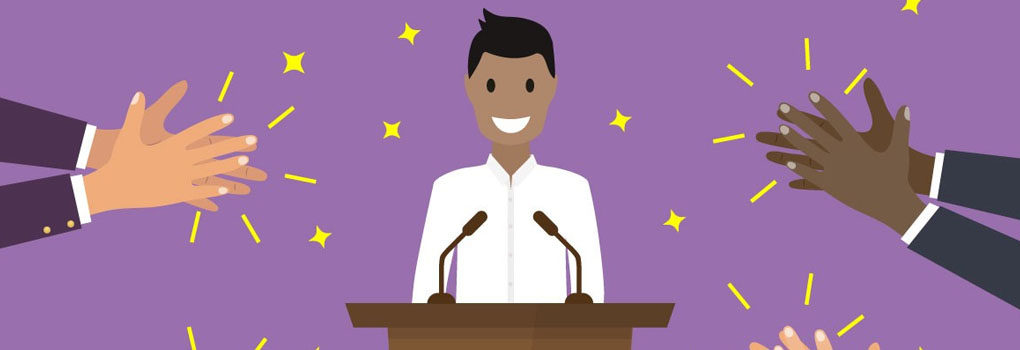Experiential Learning and Kolb's Learning Styles
Updated March 05, 2021 - Gini Beqiri
Aristotle said in his Nicomachean Ethics book:
"For the things we have to learn before we can do them, we learn by doing them."
Research also supports this idea; with the recollection of information being higher when we experience things ourselves, rather than being told about concepts or observing.
Experiential learning is effective but not everyone can easily learn by doing. However, with the rapid development of immersive learning technology such as virtual reality (VR) over the last few years, people can learn through experience from any location.
What is experiential learning?
Experiential learning is the process of learning through experience or "learning by doing", such as working for a company as an intern or learning how to ride a bike. This type of learning consists you being immersed in an experience and then reflecting on it afterwards.
Experiential learning occurs outside of the traditional classroom setting and it's effective because it leads to lasting behaviour changes through the acquisition of new habits.
Chapmen et al (1995) stated that if an activity has the follow characteristics then it's experiential learning:
- A combination of knowledge and experience - the learner must understand the theory and then put this into practice.
- Reduced external evaluation and more reflection - the instructor is less involved and instead, the learner plays a critical role in assessing themselves.
- Learning outside your comfort zone - this used to be the case but with the introduction of virtual reality courses this criteria is not entirely applicable.
- The activities must be relevant - the experience must be relevant to the learner so they feel motivated.
- Reflection - learners should reflect on their own learning to provide them with personal insights.
- See the big picture - the learning must encourage the students to link their learning to the world - how is what you're learning applicable to real-life?
- Emotional investment - learners must want to engage in the experience and not just do it because they feel they have to.
Differences between traditional and experiential learning
| Traditional learning | Experiential learning |
|---|---|
| Instructor-centred with lots of facilitation. | Learner-centred with minimal facilitation - the learner manages their own learning instead of being told what to do and when to do it. They have more responsibility than the instructor. |
| Teach knowledge and skills by providing information. | Develop knowledge and skills through experience. |
| Usually takes place in a classroom setting. | The context differs depending on the subject and there may be no textbooks or academic articles to study. |
| Learning outcomes are provided. | Learning outcomes are flexible and specialised to the learner. |
| Fixed structure. | Flexible structure - the curriculum may not be clearly labelled and the learner may have to choose which knowledge they need to know and reflect on their learning throughout. |
Examples of experiential learning
Experiential learning can be carried out in a variety of ways, for example, through:
- Internships
- Apprenticeships
- Role-playing
- Fellowships
- Service-learning
- Field work
- Studying abroad
- Volunteering
Benefits of experiential learning
There are many benefits of experiential learning:
- You gain real-life experience which can leave you feeling more self-confident.
- Learning becomes more meaningful if you put it into practice because many skills need to be practiced to be developed.
- Provides you with practical experience which shows you the value of this learning as you can see direct outcomes. This consequently motivates you to learn.
- Some people find it difficult to learn in formal learning settings.
- Experiential learning always has an element of reflecting on your performance. This reflection helps consolidate learning and helps transfers learning to new contexts.
- Helps provide you with the necessary skills before you transition into the workforce.
- Taking the hands-on approach often leads to faster learning.
- Produces independent learners - if you're out in the world solving problems and completing tasks this will show you what you're good at and what you need to focus on developing.
- Helps you remain focused because when you're engaged in active learning you're less likely to become bored.
- When you're involved in the learning process you will feel more invested.
Experiential learning theory and models
Experiential learning theory
Experiential learning theory is based on the idea that learning is a process consisting of knowledge learned through experience.
Experiential learning model
The learning theory is based on Kolb's (1984) experiential learning model. The learning cycle has four quadrants:

- Concrete experience - doing or having a novel experience.
- Reflective observation - reviewing and reflecting on the novel experience, focusing on whether there were any discrepancies between the experience and understanding.
- Abstract conceptualisation - what was learned from this experience? Thinking how you can improve on this for the next time.
- Active experimentation - planning or practically applying the learning.
For example,
- Concrete experience - You delivered a presentation at the monthly staff meeting but it was received poorly.
- Reflective observation - You realise that you were over-talking and not getting across your key points succinctly.
- Abstract conceptualisation - You receive advice from colleagues, you refine your key messages and you practice more.
- Active experimentation - You prepare according to their advice and practice with your friends.
You can start from any one of the cycle's quadrants but all four steps must be executed for successful learning.
Kolb also acknowledges that depending on a person's learning preferences, they will perform better in the respective quadrants. Kolb listed four types of learning styles:
- Accommodating - prefer feeling and doing. They are intuitive, prefer a physical approach and rely on others' thinking.
- Diverging - prefer feeling and watching. They are creative, people-orientated and are able to look at a situation from different viewpoints.
- Assimilating - prefer watching and thinking. They prefer logical theories over practical and physical approaches.
- Converging - prefer thinking and doing. They prefer technical work and use their thinking and learning to solve practical issues.
The 70-20-10 learning model
The 70-20-10 model for learning and development was created by McCall, Lombardo and Eichinger (1996). This model, based on their research, shows how people learn best in the workplace. They found that:
- 70% of learning comes from job-related experience. This type of learning allows you to find out: what skills you have, what skills need to be developed, make decisions, problem-solve etc.
- 20% of learning comes from interactions with other people through a range of activities, such as, mentoring, coaching, group learning etc. Support and feedback are the main benefits of this approach.
- 10% of learning comes from formal educational events, such as, training courses.
Many companies use this model as a basis to train employees.

Experiential learning and Virtual Reality (VR)
How does experiential learning link to VR?
VR is experiential learning - you are immersed in a world that simulates real-life where you put your knowledge and skills into practice. This means that VR learning can be associated with the 70% category from the 70-20-10 learning model.
Experiential learning with VR
VR fits into the experiential part of the 70-20-10 learning model, making it an efficient, cost effective way to learn new skills and processes.
The benefits of experiential learning with VR
There are many benefits of using VR for experiential learning:
- VR can simulate real-life situations, such as having a difficult conversation with a manager, having to lay off employees etc.
- By practicing in these environments, you will have the opportunity to safely fine-tune your skills and you're more likely to remember content if you have already applied it.
- You can interact with virtual avatars and receive feedback on your performance.
- Using AI to have conversations with avatars and change the outcomes of the situation depending on your performance.
- You can freely practice as often as you need to as there are no time constraints.
- Learning and practicing can be spaced out in smaller chunks compared to, for example, during training days. Information is more likely to be retained if there is gradual learning, rather than being taught an overwhelming amount in a short period of time.
- VR environments are highly customisable, for instance, you can simulate being interviewed inside a virtual BBC studio and answer questions from the virtual presenter. This can enhance experiential learning by making the activity considerably more realistic which will consequently allow you to reflect on a more valid performance than, for example, practicing in front of a mirror.
- By practicing in VR you are making the material more meaningful and relatable because you are applying the learning in your own way through your responses and behaviour.
- It can be easier to access experiential learning with VR compared to other experiential learning, for example, perhaps you're struggling to find a training course near you.
- People that avoid experiential learning due to shyness of anxiety can develop their skills and increase their confidence in a safe space before applying this learning to real-life.
- Using VR is a more engaging way of learning because it draws your complete attention.
- VR consists of active recall which means that you're stimulating your memory while learning. This is beneficial for remembering in the long-term and is more effective than passive recall, such as, re-reading information or just watching a video.
Learning by experience is an effective way to improve skills - VR has made this type of learning widely available and accessible to people around the world.


